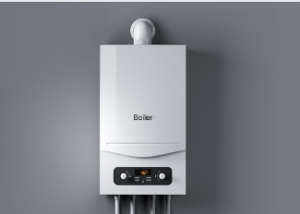While all solar hot water systems include similar components, there are some important differences between the systems. The type of system you choose will affect how fluid is heated in the collectors and how the hot water is moved through the system. Below we discuss the key differences between the direct and indirect solar hot water systems. We’ll also discuss the pros and cons of each type. And as always, keep in mind that you’ll need to consider your budget before choosing a solar hot water system.
 Several types of solar hot water systems are available. They include passive and active CHS systems. Passive systems are passive with a tank over the collector, while active systems include a pump and controller operated by a photovoltaic panel. Direct systems offer little freeze or overheat protection. Moreover, collectors in hard water areas tend to build upscale. Ion-exchange softeners can reduce the amount of scale in the system. Recently, freeze-tolerant designs have expanded the market for SWH in colder climates.
Several types of solar hot water systems are available. They include passive and active CHS systems. Passive systems are passive with a tank over the collector, while active systems include a pump and controller operated by a photovoltaic panel. Direct systems offer little freeze or overheat protection. Moreover, collectors in hard water areas tend to build upscale. Ion-exchange softeners can reduce the amount of scale in the system. Recently, freeze-tolerant designs have expanded the market for SWH in colder climates.
There are many factors to consider when selecting a hot water system. Whether you’re building a new house or upgrading an old one, you need to find the right choice for your lifestyle, household budget, and the environment. To help you narrow down your options, we’ve compiled a short guide that outlines the pros and cons of each type. In addition, you can learn what size system is best for your home.
One of the biggest differences between the types of solar systems is the tank type. While the former costs the most to purchase, the latter costs the least to operate. Both types of solar hot water systems have pros and cons, but a solar system will probably cost more than a tank-based system. Of course, they’re more expensive than a conventional system, so make sure to compare them carefully before deciding. When choosing a solar hot water system, keep in mind that it will need to be installed professionally. The cost range is between $3000 and $8000, depending on your unit.
A time-based evaluation is another way to increase the capacity of your heating system. Installing a tandem tank close to your main tank can help you increase your storage capacity without disrupting your existing system. However, this system requires a continuous pump to move water between the two tanks. It can be either a separate pump or a pump attached to your existing system. If you’re unsure of what size tank to buy, consult an engineer and ensure you’re getting a system that will suit your needs.
Another consideration when choosing a distinctplumbing.com.au hot water system Adelaide is its energy efficiency. While you’re looking for the cheapest option, it is vital to consider the annual operating costs of the unit. In addition, if the storage tank is not properly insulated, it’s wasting energy and standby heat. Finally, a high energy efficient hot water system may improve the resale value of your home. So, consider all of these things before purchasing a hot water system.
When considering which distinctplumbing.com.au hot water systems Adelaide to buy, look for those that use natural gas as the fuel. On the other hand, electric hot water systems can be expensive to run and contribute to environmental pollution. Therefore, you’ll want to choose a cheaper and more efficient fuel. A natural gas system is the most energy-efficient option for hot water systems. This option may cost more upfront, but it’s worth it in the long run.
Controls on a hot-water system are relatively straightforward. You’ll have one central boiler that heats water to 140-180 degrees Fahrenheit (60-83 degrees Celsius), and a relay controls the other parts. Sometimes, the fan is connected to the same relay but doesn’t need to run when the pump is off. These temperature differences mean that the system is most efficient if designed to store heat quickly and release it slowly.
Storage systems lose heat through the tank’s walls, so you’ll need to add some insulation to the system. Insulation blankets can help minimise heat loss, though they won’t work as well on gas storage systems with pilot lights. You’ll also need to use proper pipe insulation for safety reasons. For example, if you’re installing a solar hot water system, use a good insulation blanket on the pipes leading to the relief valve.